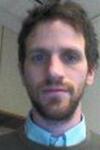Lev Bishop
Circuit Quantum Electrodynamics (cQED), the study of the interaction between superconducting circuits behaving as artificial atoms and 1-dimensional transmission-line resonators, has shown much promise for quantum information processing tasks. For the purposes of quantum computing it is usual to approximate the artificial atoms as 2-level qubits, and much effort has been expended on attempts to isolate these qubits from the environment and to invent ever more sophisticated control and measurement schemes. Rather than focussing on these technological aspects of the field, this thesis investigates the opportunities for using these carefully engineered systems for answering questions of fundamental physics. The low dissipation and small mode volume of the circuits allows easy access to the strong-coupling regime of quantum optics, where one can investigate the interaction of light and matter at the level of single atoms and photons. A signature of strong coupling is the splitting of the cavity transmission peak into a pair of resolvable peaks when a single resonant atom is placed inside the cavity—an effect known as vacuum Rabi splitting. The cQED architecture is ideally suited for going beyond this linear response effect. This thesis shows that increasing the drive power results in two unique nonlinear features in the transmitted heterodyne signal: the supersplitting of each vacuum Rabi peak into a doublet, and the appearance of additional peaks with the characteristic [special characters omitted] spacing of the Jaynes-Cummings ladder. These constitute direct evidence for the coupling between the quantized microwave field and the anharmonic spectrum of a superconducting qubit acting as an artificial atom. This thesis also addresses the idea of Bell tests, which are experiments that aim to disprove certain types of classical theories, presenting a proposed method for preparing maximally entangled 3-qubit states via a ‘preparation by measurement’ scheme using an optimized filter on the time-dependent signal obtained via homodyne monitoring of the transmitted microwave field
